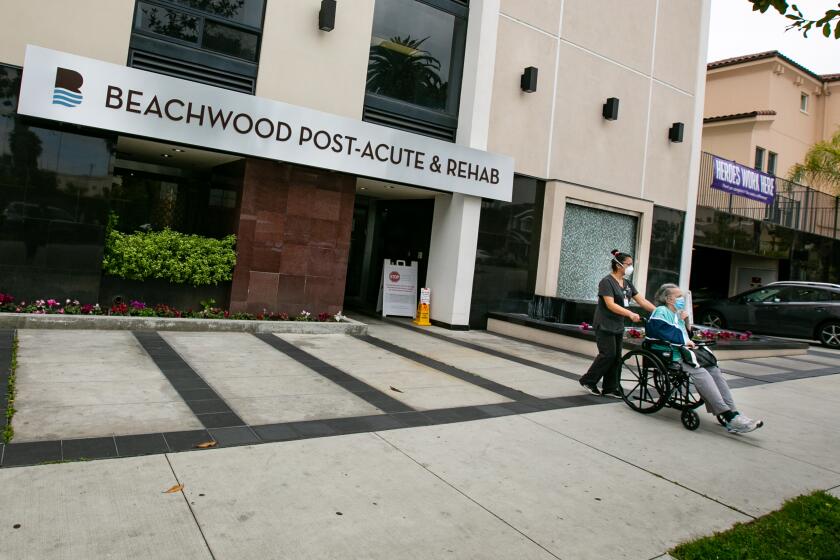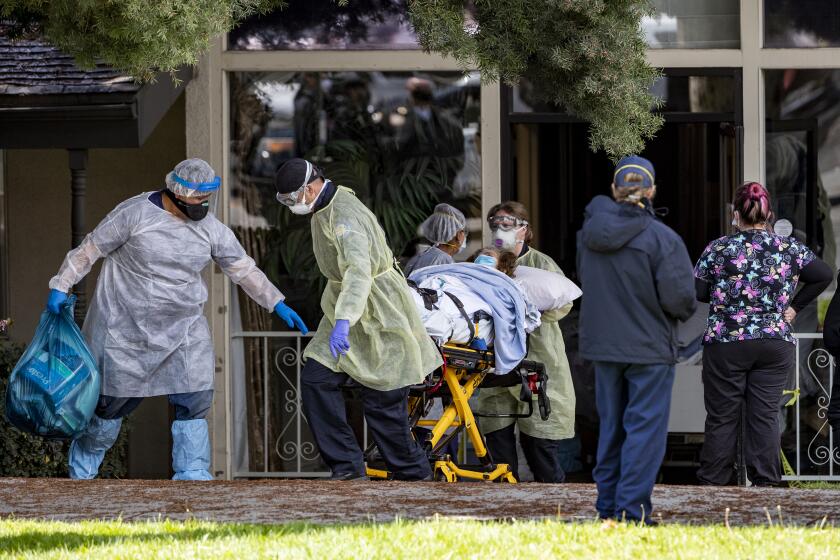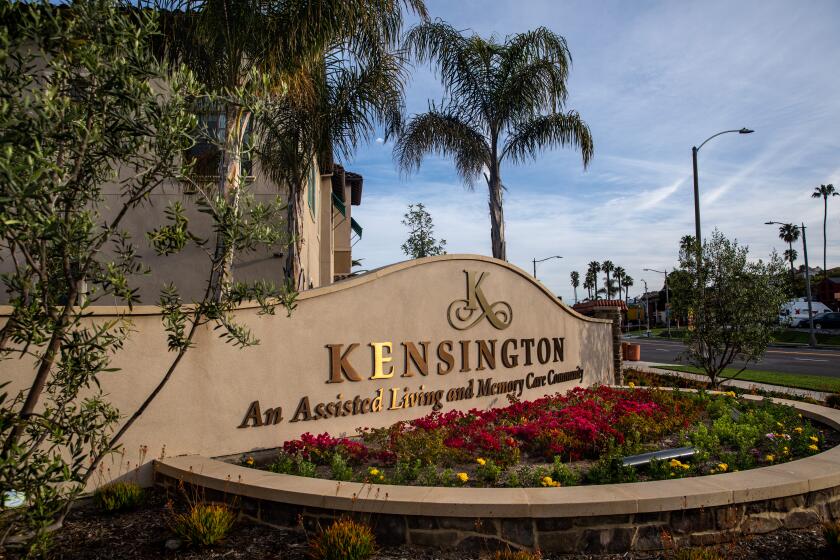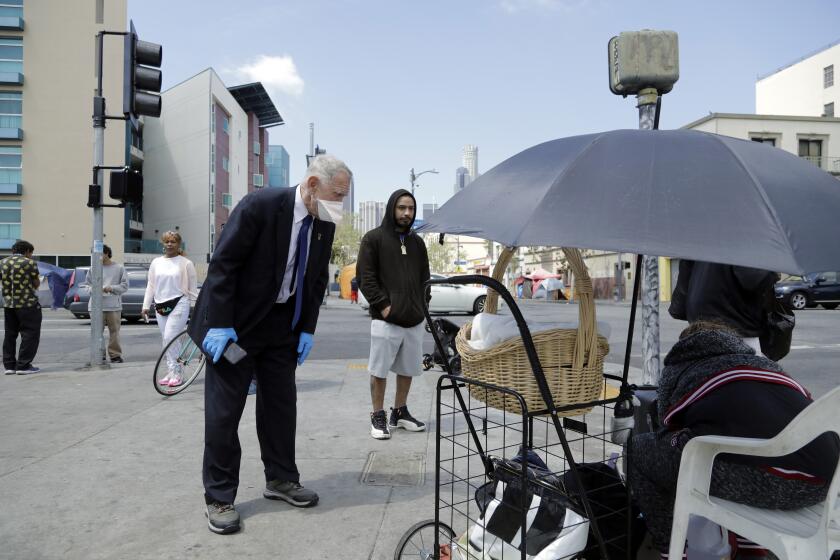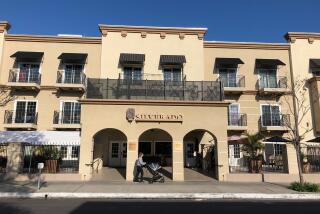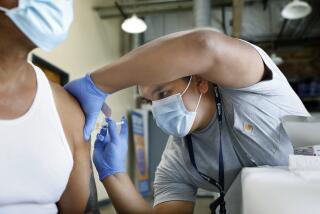California names nursing homes with coronavirus outbreaks, number of cases
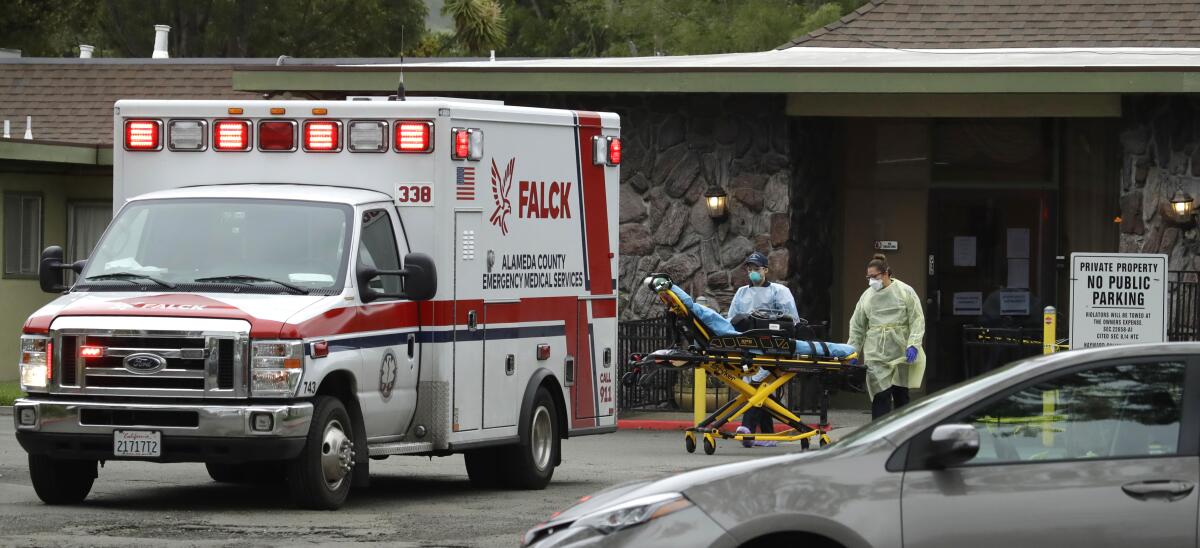
For the first time, California Department of Public Health officials have divulged the names of nursing homes across the state with COVID-19 outbreaks and the number of cases at each facility.
Among the hardest-hit facilities are the Brier Oak on Sunset nursing home in Los Angeles, where 80 residents and 62 staff members have tested positive, according to the state’s list. The Country Villa South Convalescent Center in Palms has had 58 patients and 15 staff test positive, and the Garden Crest Rehabilitation Center in Silver Lake has had 35 patients and 35 staff test positive.
Nursing homes have become a tragic focal point of the coronavirus outbreak, with their elderly residents, many of whom have underlying health conditions, accounting for a large percentage of COVID-19 deaths across the country. More than 30% of those who have died in Los Angeles County were residents of long-term care facilities; more than 70% of the deaths in Long Beach have been nursing home residents.
The California health department lists the names of 261 skilled-nursing facilities across the state with more than 3,000 positive cases among residents and staff. The health department website said the list, which was published late Friday, is a snapshot representing 86% of the state’s 1,224 skilled-nursing facilities that had reported data within the last 24 hours.
More than half of the homes on the list, 148, are in Los Angeles County.
As the novel coronavirus continues to tear through nursing homes, state and local governments have been slow to inform the public about the scope of the crisis. Much of what is known so far about COVID-19 in senior facilities has not come from public agencies, but private sources: relatives, staff members and administrators.
The state’s list is “long overdue,” said Michael Connors, a spokesman for the California Advocates for Nursing Home Reform.
89% of skilled nursing facilities with coronavirus were recently cited for infection control problems, a Times analysis found.
“All of its numbers are highly suspect because there is so little testing going on in long-term care facilities and no reason to believe that facilities are accurately reporting information on outbreaks and deaths,” Connors added.
The state’s list, which officials have promised to update regularly, does not show how many people have died at each facility.
It is also plagued by apparent omissions and undercounts. For weeks, the Los Angeles County Department of Public Health has been publishing names of group living facilities with COVID-19 cases, without specifying how many people have tested positive at each place. Some of those homes do not appear on the state list.
The state list also does not include data from California’s 7,461 residential care facilities.
A state spokesperson said via email Saturday that compiling the data on residential care facilities was in the works, but was “more complex privacy-wise” because many have very few residents.
Representatives from Brier Oak, Country Villa South and Garden Crest did not respond to requests for comment on Saturday.
Steven Lehman, 58, spent about 10 days at Brier Oak in mid-March, just as coronavirus cases were cropping up across the state. Toward the end of his stay, he got a roommate who was hooked up to a breathing machine.
“I’m just glad I got out of there in time,” said Lehman, who has not had any symptoms.
In thousands of care facilities, where the coronavirus’ deadly toll has been acutely felt, staffers are growing scared, sick and overwhelmed as cases and deaths mount.
A nursing assistant who works at Brier Oak, who asked that her name not be used because she is not authorized to speak to the media, told a Times reporter on Saturday that the administration discouraged the staff from wearing protective masks for most of March.
The nursing assistant is among the dozens of staffers who have now tested positive. “I was infected because of that woman,” she said, referring to the administrator. “Because that idiot woman told us we couldn’t wear masks...everyone is infected because of her.”
One reason Brier Oak has reported so many cases is because it is doing widespread testing at a time when many nursing homes are resisting, said Dr. Noah Marco, chief medical officer for Los Angeles Jewish Home.
His facility received 500 test kits from the city of Los Angeles recently and shared about half of them with Brier Oak, Marco said. “They are conscientious and open to doing the right thing,” Marco said.
Widespread testing of asymptomatic staff is the most important measure homes can take right now because people without symptoms are the most dangerous spreaders of the virus, Marco said.
Jewish Home tested 99 staff members and only one came back positive. That person had no symptoms. “Knowing this person was positive and pulling them off the line reduced the spread,” Marco said. “Testing a sick member of staff, they’re already home, how does that help us?”
Other homes are refusing to test, often out of fear of bad publicity.
A doctor who works for Jewish Home went to test a patient at Stoney Point Healthcare Center in Chatsworth last week, Marco said, and was stopped by a nurse who told him the administration wasn’t allowing anyone in the facility to be tested.
More than 100 local nursing homes and communal living facilities have seen coronavirus cases. Pulling out residents is advisable, county leader says.
The doctor pointed out several patients behind a barrier who appeared to be symptomatic and told the nurse it looked as if the facility had an outbreak, Marco said. But the nurse insisted testing was not allowed.
Marco said he reported the facility to L.A. County health department officials.
Stoney Point is on the state list, but it’s unclear how many cases the facility has because the number for both staff and patients is represented as fewer than 11 — a device state officials are using to protect privacy in facilities where the number of cases is relatively low.
David Oates, a crisis communications specialist speaking on behalf of Stoney Point, said if a nurse told a doctor that testing was not allowed, “she was mistaken.”
Stoney Point has eight staff members who have tested positive and are quarantined at home. No patients have tested positive, Oates said, but nine patients are in isolation and being monitored for symptoms.
“I checked and we can’t immediately find a person from Los Angeles Jewish Home who visited Stoney Point Healthcare,” Oates added.
In some cases, the numbers on the state’s list appear to be out of date.
At the Redwood Springs Health Care Center in Tulare County, site of one of the most devastating outbreaks in the state, the most recent figures obtained by the Los Angeles Times found that 106 residents and 50 employees had tested positive for the virus as of Thursday. The state lists 91 residents and 46 staff members. The facility also reported that 10 residents have died after testing positive, said Oates, who is also representing Redwood Springs.
The toll on nursing homes has led to a crisis of staffing. In some places, including Redwood Springs, so many workers are ill that replacements have been brought in. An official at the facility said that at least 18 workers were staying in a hotel paid for by the facility so that they didn’t infect family members, but staff that was previously exposed is largely quarantining at home.
In other places, staff has refused to work after outbreaks, prompting the evacuation of at least one nursing home in Riverside County. Gustavo Urrea, whose 20-year-old niece Valeria Viveros worked the night shift at an assisted living facility there and died last week after contracting the virus, said he believes not enough is being done to protect nursing home and assisted-living workers.
He said Viveros was sent home after developing what she thought was a cold. But days later, she developed breathing problems and was taken to the emergency room. She died without her mother being able to see her, said Urrea, and now the family is concerned that others in the household may be infected.
“Those are the people they have to protect first, those are the people they have to test first,” said Urrea of nursing home workers. “She was very lovely. She used to be very caring with her mom and that’s what hurts me the most.”
More than 40% of positive cases reported in the state data are staff members.
“It saddens me but it does not surprise me by any stretch of the imagination,” said April Verrett, president of SEIU Local 2015, which represents about 20,000 nursing home and healthcare workers statewide. “I knew the conditions our members were working under were leading to a high number of infections, we just have not had the data to support it until now.”
Verrett said that while access to personal protective equipment — such as masks and gowns — has gotten better, shortages remain.
“Many of our members are still feeling that the PPE is being rationed, or they may get an N95 mask but they are being told to protect it with their life, they are being told to reuse it,” Verrett said.
Verrett said that based on the potential exposure of staff at such facilities, she believes every skilled nursing home worker statewide should be tested and offered paid time off if they need to quarantine. She points out that the majority of her members are women, many people of color and immigrants, who cannot afford two weeks without pay.
“They are not high-wage jobs at all,” Verrett said. “It’s the choice between being able to keep a roof over your head and food on the table for your children.”
At 76, Judge David Carter knows he shouldn’t be on skid row exposing himself to the coronavirus. But he wants more for L.A.’s homeless people.
More to Read
Sign up for Essential California
The most important California stories and recommendations in your inbox every morning.
You may occasionally receive promotional content from the Los Angeles Times.
